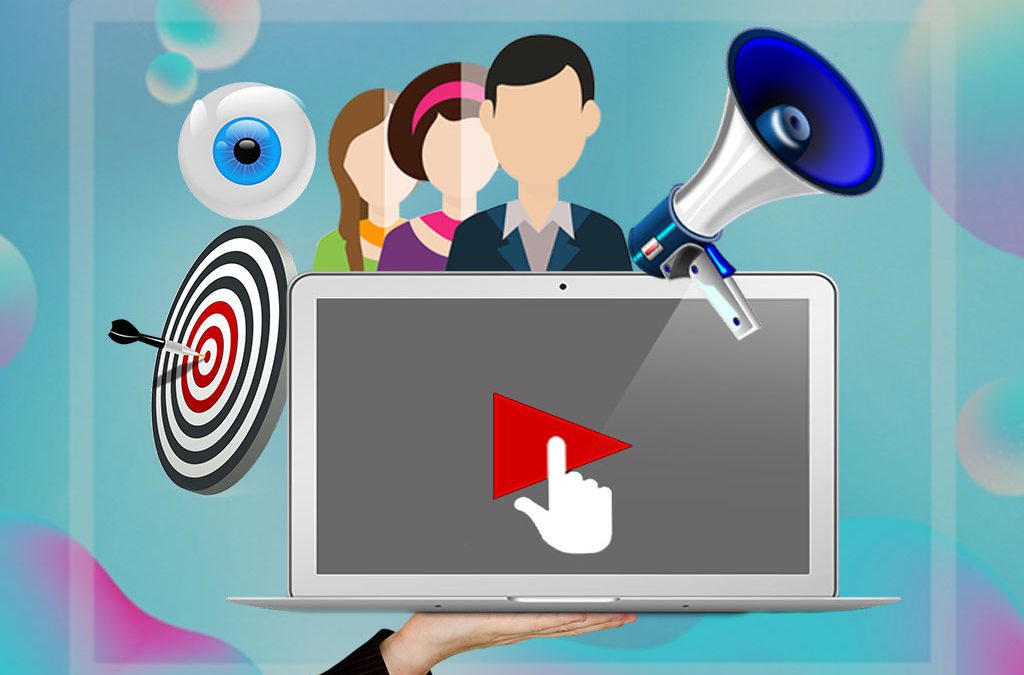How to Create Engaging Videos Using Buyer Personas and States of Being
Video marketing is officially the top content format B2B marketers used in 2019. And it’s no surprise. People are watching more video across various platforms.
While video has become a quintessential component of today’s content marketing strategy, it’s like any other medium. To produce your most engaging content, you must develop an intimate understanding of your audience.
And this is why buyer personas are so important.
They take the guesswork out of marketing. They provide a clear picture of who your ideal customers are, what challenges and pain points they experience along the buyer’s journey, and exactly what they need to be able to take the next step towards your solution.
Sure, you’ve heard of buyer personas before, but this blog post isn’t about a step-by-step process to build yours. It’s about using insights uncovered to produce engaging videos.
I’ll also share how to use those insights along with a resource that few marketers pay attention to (and are possibly unaware of). Together, they will help you form cohesive and engaging videos to guide your buyers along the path to your solution.
Personas and States of Being
So, you’ve developed buyer personas. You’ve gathered basic demographical information and you’ve also uncovered certain psychographic nuggets about your personas.
Before you set up a video studio and hit record, let’s take a step back and unpack the role of buyer personas.
One of the most common misunderstandings about personas is that they don’t show how to remedy problems and challenges personas face. In fact, they are often discarded once created for this reason.
Truth is, personas are not meant to include remedies for buyer problems. They are meant to highlight problems and characteristics.
You need a different kind of tool to compliment your buyer personas, one that creates more context for the issues buyers face, and what buyers ultimately see as the perfect solution.
DigitalMarketer refers to that tool as the before and after grid.
Image: DigitalMarketer
It’s the perfect way to establish the before and after states of your persona.
Coupled with the insights from your buyer persona, and the before and after states, you’ll be able to create compelling live streams or pre-recorded videos about the experiences your personas have while looking for a solution like yours.
To accompany the before and after state grid, digital marketer recommends that you ask the following 10 questions:
- What does your prospect HAVE in the “Before” state?
- What does your prospect HAVE in the “After” state?
- How does your prospect FEEL in the “Before” state?
- How does your prospect FEEL in the “After” state?
- What is an AVERAGE DAY like for your prospect in the “Before” state?
- What is an AVERAGE DAY like for your prospect in the “After” state?
- What is your prospect’s STATUS in the “Before” state?
- What is your prospect’s STATUS in the “After” state?
- What is an EVIL that is plaguing the prospect in the “Before” state?
- How does your prospect conquer it and bring more GOOD to the world in the “After” state?
Here’s an example of a completed grid based on DigitalMarketer’s marketing manager persona.
Image: DigitalMarketer
Emotion Matters. Always.
As you can tell, there’s a considerable amount of emphasis placed on the feeling or state of your persona. This is especially important to note because your buyers, while interested in the solution, are still people driven by emotion.
Yes, B2B and B2C sales and marketing funnels differ. B2B involves a more logical decision-making process, with more parties at the table.
But all smart marketers and copywriters know that B2B buyers experience what is referred to as a split personality disorder.
This split personality disorder dictates that B2B buyers are interested in some form of personal gain (being seen as a hero for finding the solution and experiencing a degree of actualization or receiving praise for a job well done) while helping the organization find the best way to solve a problem.
The before and after state grid also highlights what your buyer has (think current solutions they use) before experiencing your brand and solution in the after state.
Armed with an understanding of the before and after states of your buyers, along with an idea of their average day, you’re ready to get creative.
You’ll be able to come up with ideas to highlight and address challenges and pain points. You’ll also be able to artfully explore and use the way your personas feel about each pain point and their desired end state to create engaging videos.
But how does it all come together?
Five Tips for Creating Engaging Videos
While not an exhaustive step-by-step process, these tips will help elevate your videos. They will help you focus on the most important challenges your buyers’ experience, and give you a basic framework for building effective videos.
1. Identify a Big Hairy Problem
Identifying a big, hairy problem should be easy. Having created your personas (which should be based on primary and secondary research) you’ll know what challenges, pain points, and aspirations your personas have.
Note: not all problems will carry equal weight, so focus on the biggest and more painful issues your buyer faces. If you can identify exactly what one of their biggest problems is, you’re closer to winning their attention. Your video will speak exactly to what they’re going through, making it highly relevant.
2. Arrange Your Ideas
Build an outline for your videos by prioritizing ideas and refining them to address the problem. Often, big hairy problems are complex. They require education, context, and examples to make sense to viewers.
As you arrange your ideas, remove anything that falls outside the scope of what your persona must know to take the next step in their journey. Too many ideas can be overwhelming and lead to less interest in your content due to cognitive load.
3. Leverage Interests and Preferences
If you’ve spent time developing your buyer personas, there’s a good chance that you’ve uncovered interesting facts and preferences about your buyers.
For example, if your buyers are developers who have an affinity for Star Wars, using a Star Wars reference will make your content more appealing and personable. Your brand, in essence, becomes one they can relate to on a more personal level.
Interests and preferences don’t have to extend to pop culture. They can be related to small but important details about your buyers that can make a difference in how your brand is perceived.
For example, HubSpot knows that sales leaders are busy. While they could create a longer explainer video about how their CRM works, they produced a 60-second version.
If you’re a busy sales leader looking for a CRM tool that will streamline your processes, this video definitely looks appealing.
4. Use Emotions to Form Strong Connections
Videos must include emotional experiences to get viewers to invest their time watching them. All successful videos do this in some way. It could be a big promise of value in the beginning or identifying a threat or pain point that must be addressed.
By establishing an emotional connection, viewers become committed to seeing the video through because they need and want relief.
In their ad, Monday.com highlights the pain of trying to manage projects using spreadsheets (a common practice in companies).
But they don’t stop there. Identifying the pain point isn’t enough. They also share very specific consequences of not finding a project management tool.
URL: http://www.youtube.com/watch?v=S7mCil97ZVM
5. Use a Call to Action
The buyer’s journey is only clear when you give viewers something to do at the end of your video. Call to actions are, therefore, vital. They guide the buyer along to the next step of their specific journey.
Your call to action can be anything. You could send the viewer to another video or a landing page, but ensure that the next step makes sense along the buyer’s journey.
Conclusion
Creating the perfect video requires more than a good idea. You need an intimate understanding of your buyers’ personas. You also need to know how your solution influences their before-and-after states. Together, these details will give you insight into what matters most to your buyers along their journey to finding a solution, and how you can tap into their states of being to deliver engaging videos that speak directly to their needs.
| Author: Amir Shahzeidi Bio: Amir is the digital marketing manager at Uscreen, an all-in-one video monetization and live streaming platform that empowers video entrepreneurs and creators to monetize their content and build thriving businesses around their videos. |





